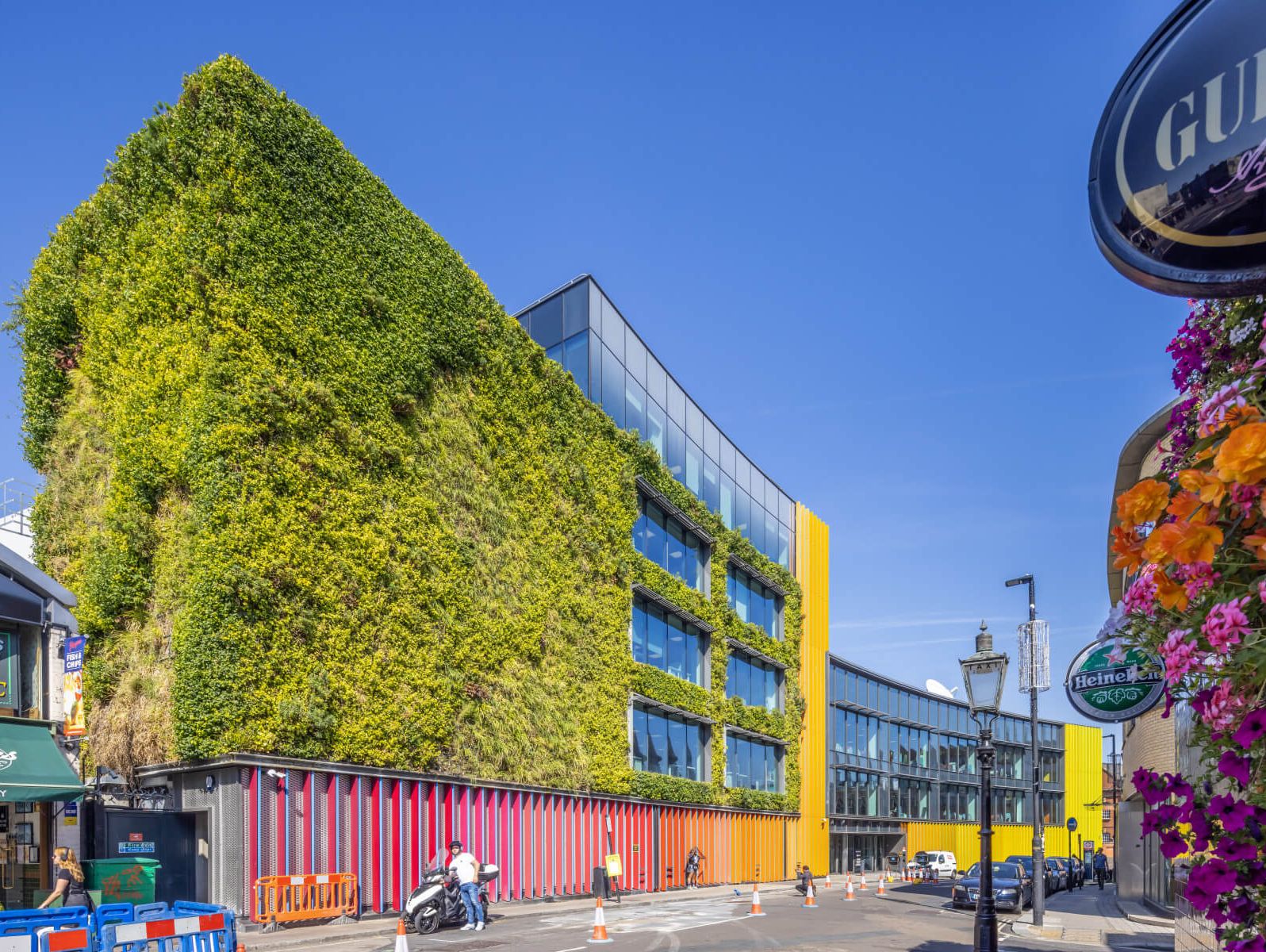What comes after concrete? The construction industry versus climate change
Concrete is one of the most commonly used building materials. Unfortunately its production process significantly contributes to CO2 emissions, and excessive amounts of this water-impermeable and fast-heating material negatively affect the comfort of its users.
Currently about 10 billion tonnes of concrete are used every year, making it the most widely used man-made material in the world. The chemical and thermal combustion processes that take place during the production of cement, the main component of concrete, are the source of about 8% of global carbon dioxide emissions – which is more than the CO2 emissions from jet fuel (2.5%).
Urban heat islands, the problem of concrete-covered spaces
The overuse of concrete is a problem for society as well. So-called urban heat islands (UHI) are formed, which involve temperature differences in urban spaces in relation to the surrounding undeveloped areas. Concrete-covered spaces accumulate large amounts of heat and then slowly release it back to the environment. The situation is exacerbated by the scarcity of biologically active areas – areas covered with vegetation that enable natural water retention. This leads to localised flooding and damage to both public and private infrastructure as a result of the increasingly violent rainfall events caused by climate change.
Among the solutions to the problem of urban heat islands are the use of green roofs, vertical gardens, and increased use of green areas in the design process, as well as the use of building materials alternative to concrete.

Viacom International Media Network (VIMN) headquarters, London, UK Systems used: MB-70HI, MB-SR50N, MB-SR50N EFEKT.
What are the alternatives to concrete for the construction industry?
Reaching zero-carbon emissions is the goal that European countries have pledged to achieve by 2050. To make this possible CO2 emissions from concrete production have to decrease significantly. The development of new types of low-emission concrete is ongoing, and green building materials which can supplement concrete or replace it altogether are becoming increasingly popular.
Aluminium
Aluminium is an environmentally friendly metal and a sustainable building material. It can be recycled many times without losing its properties or undergoing structural changes. Aluminium requires only 5% of the energy necessary to process the virgin metal. It is also a material that guarantees excellent thermal insulation, rigidity or resistance to adverse environmental conditions.
Glass
This is a green building material that can be processed virtually endlessly by melting and refining. Moreover, its production does not consume a large amount of energy. Glass is also non-combustible and corrosion-resistant, which increases its application possibilities.
Wood
Wood is another green building material. Through proper treatment and impregnation it becomes a raw material that is not only highly durable, but also fire-resistant.

Alder Hey Academy, Liverpool, UK. Systems used: MB-SR50N
Building materials of the future
The trend of the future is building materials that independently change their properties (e.g. colour, texture and transparency) under the influence of thermal, chemical, mechanical or electrical stimuli. For example, thermobimetals that can change shape under the influence of sunlight. In the future it will be possible to envelop buildings in a layer of thermal bimetals, eliminating the need for traditional sunshades or even ventilation and air-conditioning systems.
Biomaterials, which are part of the natural environment, could also become a building material of the future. They can be sustainably disposed of and reused in many ways. An example of such a material is mycelium, which is made up of many branched hyphae that form a tangled skeletal structure. It is grown appropriately in the laboratory and, after undergoing thermal and chemical treatment, becomes a nanomaterial ready for use in construction.
Let’s build a better future
Buildings made from green building materials are just as reliable, functional and durable as those made from traditional concrete or steel. Their positive impact on the environment makes this not just a trend, but the long-term direction in which the whole industry is heading.
